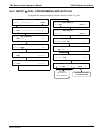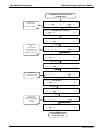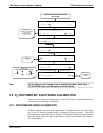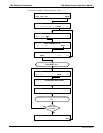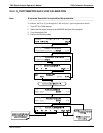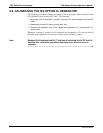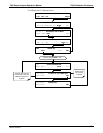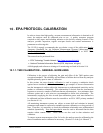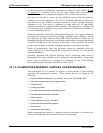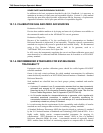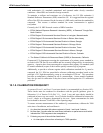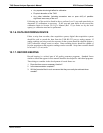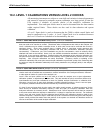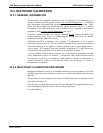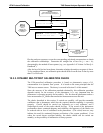
205
10. EPA PROTOCOL CALIBRATION
In order to insure that high quality, accurate measurement information is obtained at all
times, the analyzer must be calibrated prior to use. A quality assurance program
centered on this aspect and including attention to the built-in warning features of the
analyzer, periodic inspection, regular zero/span checks and routine maintenance is
paramount to achieving this.
The US EPA strongly recommends that you obtain a copy of the publication Quality
Assurance Handbook for Air Pollution Measurement Systems (abbreviated, Q.A.
Handbook Volume II); USEPA Order Number: EPA454R98004; or NIST Order
Number: PB99-129876.
This manual can be purchased from:
EPA Technology Transfer Network (http://www.epa.gov/ttn/amtic)
National Technical Information Service (NTIS, http://www. ntis.gov/)
A bibliography and references relating to O
3
monitoring are listed in Section 10.6.
10.1.1. T400 CALIBRATION – GENERAL GUIDELINES
Calibration is the process of adjusting the gain and offset of the T400 against some
recognized standard. The reliability and usefulness of all data derived from any analyzer
depends primarily upon its state of calibration.
In this section, the term dynamic calibration
is used to express a multipoint check
against known standards and involves introducing gas samples of known concentration
into the instrument in order to adjust the instrument to a predetermined sensitivity and to
produce a calibration relationship. This relationship is derived from the instrumental
response to successive samples of different known concentrations. As a minimum, three
reference points and a zero point are recommended to define this relationship. The
instrument(s) supplying the zero air and Span calibration gasses used must themselves
be calibrated and that calibration must be traceable to an EPA/ NIST primary standard
(see Section 8.1.4.)
All monitoring instrument systems are subject to some drift and variation in internal
parameters and cannot be expected to maintain accurate calibration over long periods of
time. Therefore, it is necessary to check the calibration relationship on a predetermined
schedule dynamically. Zero and span checks
must be used to document that the data
remains within control limits. These checks are also used in data reduction and
validation.
To ensure accurate measurements of the O
3
levels, the analyzer must be calibrated at the
time of installation and re-calibrated as necessary. (Section 12 of the Q.A. Manual.
11
)
06870C DCN6332



